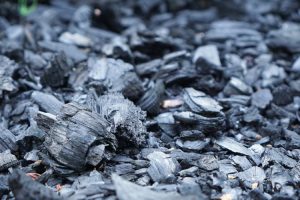Short answer
The decomposition time of meat varies depending on various factors such as temperature, humidity, and presence of microorganisms. However, on average, meat can start decomposing within 24-48 hours if left at room temperature.
More
The decomposition process of meat involves various biological and chemical changes as it breaks down. Initially, the meat becomes limp and loses its natural color due to the degradation of proteins and fats. Microorganisms such as bacteria, fungi, and yeasts play a crucial role in decomposition by breaking down the meat's tissues. The meat's smell also changes, becoming more putrid due to the release of gases like ammonia and sulfur compounds.
As time passes, the decomposition process progresses further. Bacteria continue to multiply, producing enzymes that further degrade the proteins in the meat. This leads to the formation of foul-smelling byproducts, such as amines and fatty acids. The meat's texture deteriorates, becoming slimy and discolored. Additionally, the liquefaction of fats occurs, causing the meat to become greasy and rancid.
During the advanced stages of decomposition, the meat becomes heavily colonized by a variety of organisms. Maggots, flies, and other insects are attracted to the decomposing meat and lay their eggs, accelerating the breakdown process. Eventually, the meat becomes unrecognizable and may even disintegrate into a liquid or gel-like substance. This signifies the completion of the decomposition process, where the organic matter is effectively broken down and recycled back into the environment.
Is it possible to recycle meat?
Intresting facts
- Decomposition of meat is primarily caused by the enzymes present in the meat and the growth of bacteria, which thrive in warm and moist conditions.
- Autolysis, the breakdown of proteins by enzymes naturally present in meat, is one of the initial stages of meat decomposition. Proteolytic enzymes break down proteins into simpler compounds like peptides and amino acids.
- Bacterial growth during decomposition results in the production of various gases, such as hydrogen sulfide and ammonia, giving decomposing meat its characteristic foul odor.
- The breakdown of fats during meat decomposition leads to the production of rancid or putrid smells, as well as the formation of fatty acids and glycerol.
- The appearance of mold on decomposing meat is common, particularly in moist environments, as molds thrive on the nutrients present in the meat and can contribute to further decomposition.
Summary and final thoughts
The decomposition time of meat varies depending on various factors such as temperature, humidity, and presence of oxygen. In general, fresh meat can start to decompose within hours if left at room temperature, and the process accelerates in warm and humid conditions. The breakdown of proteins in meat leads to the release of foul odors and growth of bacteria, causing it to become slimy, discolored, and develop a pungent smell. Under ideal conditions, depending on the type of meat, it may take several days to weeks for complete decomposition, while in colder environments such as refrigeration or freezing, the process slows down significantly. Proper storage, handling, and timely consumption of meat are essential to ensure its freshness and prevent the risk of foodborne illnesses.




